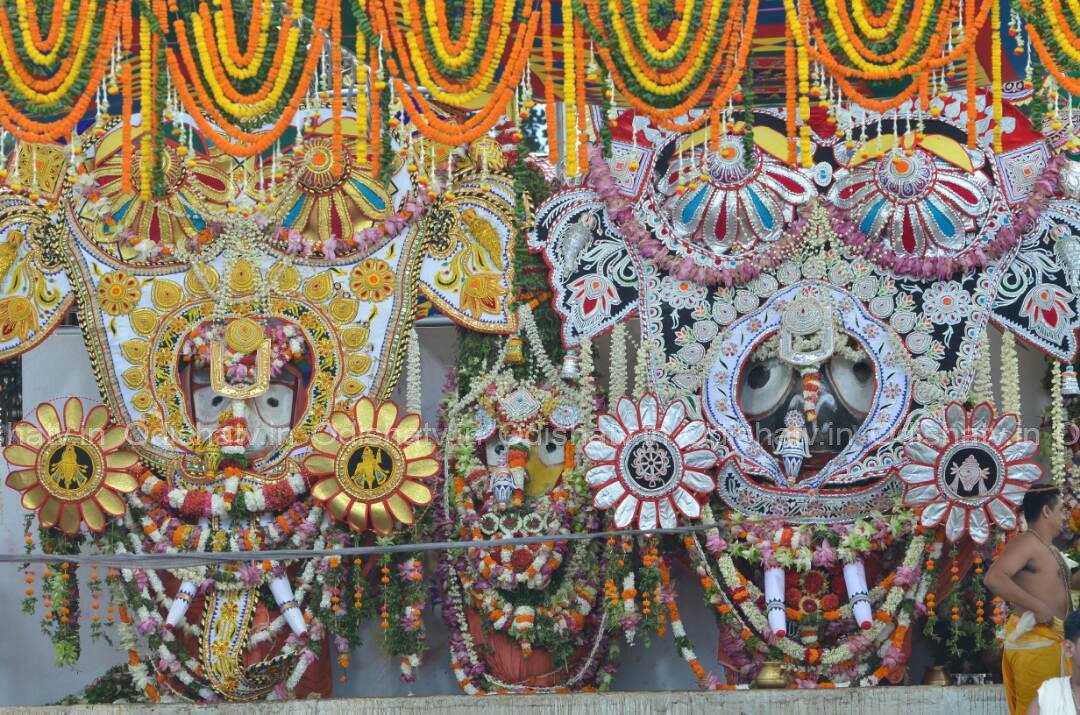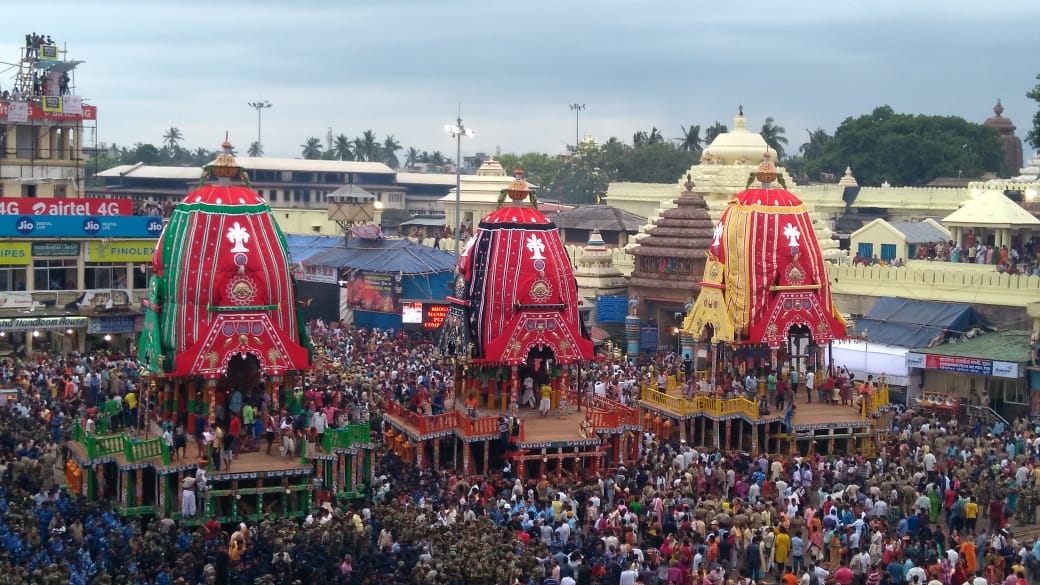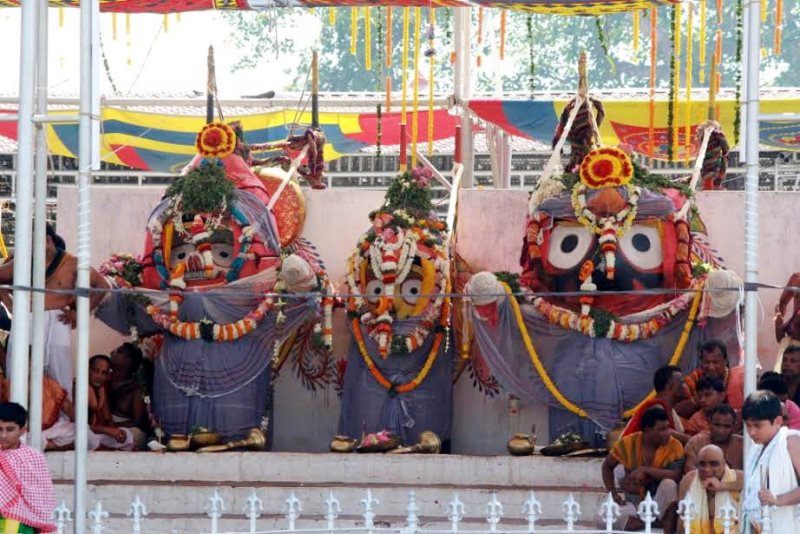Puri: Deva Snana Purnima or the ceremonial bath of the holy trinity is a very important facet of Sri Jagannath’s various rituals. Sri Jagannath along with his siblings are given an elaborate bath which then after a number of other rituals lead to the world famous Rath Yatra or the chariot festival.
Deva Snana Purnima is observed on the ‘Purnima’ (full moon day) of the ‘Jyeshtha’ month in the traditional Hindu calendar. This is the first occasion in the year as per the Hindu calendar, when the deities Jagannath, Balabhadra, Subhadra, Sudarshan, and Madanmohan are brought out from the Jagannath Temple and taken in a procession to the Snana Bedi (bathing platform). There they are ceremonially bathed, after which the deities are decorated to make an audience with the devotees.
It is believed that anyone witnessing the bathing ceremony would get cleansed of all their sins. Devotees in lakhs throng to the Sri Mandir for a view.
The ceremony is observed in a traditional way with full grandeur and is also one of the most anticipated rituals of the Lord Jagannath Temple. Some even observe this festival as the birthday of Lord Jagannath.
According to the Skanda Purana, Raja Indradyumna set this showering service in motion when he introduced the wooden divinities here.
Rituals During the Deva Snana Purnima
On the eve of the Snana Yatra, the idols of the deities are brought out in Pahandi or a procession from the garbhagriha (sanctum sanctorum) to the Snana Bedi.
On the day of the Snana Yatra, the deities are bathed with 108 pots, of ritually purified water drawn from the Suna Kua or the northern well of the temple. All the pots are then preserved in the Bhoga Mandap and purified by the priests with Haldi (turmeric), Akshat (whole rice), Chandan (Sandalwood), flowers and perfumes.

The filled and purified water pots are then carried from Bhoga Mandap to the bathing platform by the Suaras in a long single line queue. The deities are then given a ceremonial bath amidst chanting of hymns. This ritual is called ‘Jalabhisheka’.
In the evening, at the conclusion of the bathing ritual, Lords Jagannath and Balabhadra are dressed up in elephant headgear representing the God Ganesh and Goddess Subhadra wears a lotus flower Besha. This look of the Lords is called the ‘Gaja Besha’. A special bhog is prepared as offering to the Lord on the day of Deva Snana Purnima. Again in the evening, the deities appear for Sahanamela, to enable public viewing.
Anasara
After the Snana Yatra, the Gods are traditionally believed to fall ill and are kept in a sick room to recuperate in privacy under the care of the Raj Vaidya. During this period known as Anasara, the holy trinity cannot be seen by devotees. At this time three pata chitra paintings are displayed for devotees for the purpose of public viewing. It is said that with the Ayurvedic medication (‘pnachan’) administered by the Raj Vaidya help the Gods in recovering. The recuperation takes about a fortnight and then they can resume giving an audience to their devotees.

The Daitas repaint the images with new colours as the colours painted on the images fade out due to the sacred bath.
On the 16th day, the deities appear in their new forms after they become ready for the public view. This ritual is known as Netrotsava (festival for the eyes) or the Naba Yauvanotsava (festival of ever new youth).
Also Read: CM Naveen To Visit Kendrapada Ahead Of Patakura Bypoll




 Kalinga AI
Kalinga AI